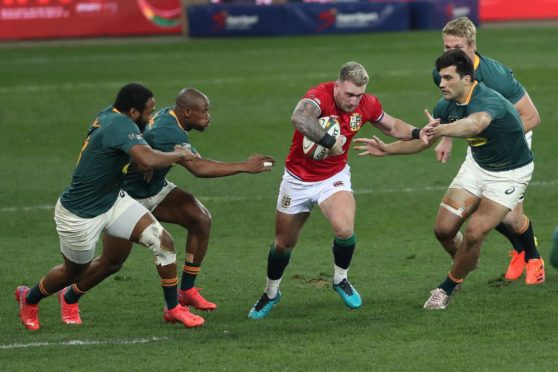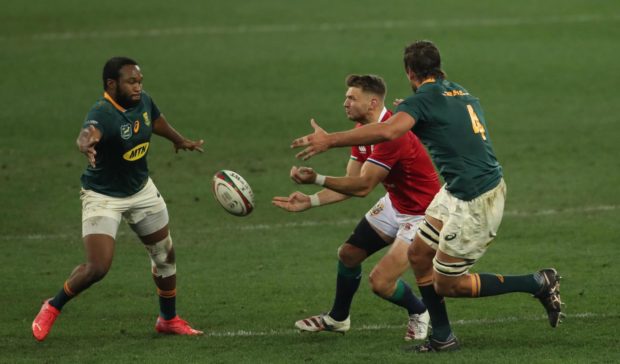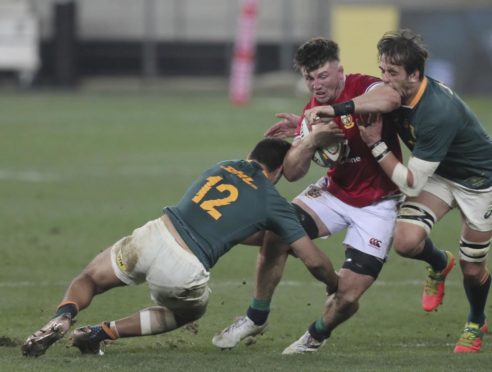The Lions had never come back from a nine-point deficit in the modern era. They’d only once – in 1989 – come back from a half-time deficit of more than six to win a test.
Until Cape Town 2021.
What did Warren Gatland say to them at half-time? And why did Jacques Neinaber replace a dominant front row at the break, in entirety, with a trio of relative donkeys?
12-3 up at half-time, the Boks were cruising. Their front row were immense in the tight, powerful and incisive when carrying. The South Africans played their World Cup template of power and control and the Lions seemed to have little answer.
Second half transformation
The transformation at halftime was total. The few things that had worked for the Lions in first-half – Ali Price’s box kicking game, Jack Conan’s carrying, Maro Itoje’s relentless ball hawking – were ramped up.
The maul, largely ineffective on the tour so far, suddenly became the most effective weapon. The Boks started to give up penalties under pressure, and Alun Wyn Jones’ decision to go for the corner from a kickable penalty acted as the Lions’ overdrive.
Throughout the second half, South Africa’s opportunities came from chaos. Two disallowed tries – one obvious, one…er…marginal – came from the Lions failing to secure easy ball.
Faf de Klerk’s try that did count also stemmed from three Lions missing a sitting target as Pieter-Steph Du Toit retreated to recover a wild Handre Pollard pass, leaving vast gaps behind them.
Lions’ pressure brings a stream of penalties
File under: things you LOVE to see 😍#LionsRugby #CastleLionsSeries #BoksvLions pic.twitter.com/vRygK3fPXp
— British & Irish Lions (@lionsofficial) July 24, 2021
But those were always against the momentum of the game in the second-half. The Boks kept giving up pressure penalties, and probably should have been at least warned after six in a row.
But it didn’t matter, because Dan Biggar kept popping then over the penalties and the immense Itoje, Conan, Robbie Henshaw and my man of the match Courtney Lawes kept driving the Lions forward, aided by Price’s outstanding control at 9.
Oddly, the Boks didn’t target Duhan van der Merwe’s defensive game at all until he was struggling with the hamstring late in the game. That left the Scotland wing to cause them all sorts of bother chasing Price’s kicks, Lawes and Henshaw picking off the loose ball when it came back.
Luck? Not really…
The only real outright luck was Hamish Watson avoiding what seemed a certain yellow card when he felled Willie Le Roux.
But while Le Roux didn’t look obviously ahead of the kick for his disallowed score, TMO Marius Jonker thought so and that’s all that mattered. He chose not to intervene in Watson’s tackle, so Gatland’s worries about him being a non-neutral were unfounded.
But credit, once again, to the head coach. No-one in rugby has had his choices examined and critiqued as much as Gatland. No-one has been proven right so often, and he was mostly right here as well.
Was the Springboks’ lack of game time because of Covid crucial? They looked less than match-fit going into the final third of the game compared to the Lions.
They will come back firing in next week’s second test. But the Lions are unlikely to be so disjointed, tentative and penalty prone as they were in the first half.
They’re firmly in the driving seat. And their resilience may be their biggest weapon.


